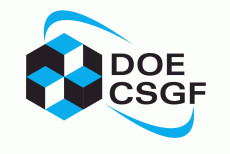Berkeley Lab Hosts Eight CSGF Fellows in 2018
CSGF Fellows represent some of the nation’s brightest computational science graduate students
July 2, 2018
Linda Vu, lvu@lbl.gov, +1 510.495.2402
This year, the Lawrence Berkeley National Laboratory (Berkeley Lab) will be hosting eight Department of Energy Computational Science Graduate Fellows (CSGF). These fellows represent some of the nation’s brightest graduate students in computational science, each pursuing a doctoral degree in a field that uses high-performance computing (HPC) to solve complex science and engineering problems.
As part of the fellowship, each student must complete a three-month practicum (research experience) at one of the 20 DOE National Laboratories of their choice. This experience is meant to offer fellows insights into how their scientific interest can translate to research areas that are important to the nation, as well as learn new skills and expand their research capabilities.
“These students can choose to do their 12-week practicum at any of the DOE National Laboratories, and the fact that they choose to come to Berkeley Lab is really a testament to the exciting work that our researchers are doing,” says CSGF alumnus Dan Martin, of the Applied Numerical Algorithms Group.
For the past ten years, Martin has served as the liaison between the CSGF fellowship program and Berkeley Lab. “In all my time recruiting fellows to come do their practicums at our Lab, I haven’t had to work very hard to convince them. Many find the open science aspect of Berkeley Lab really appealing and it’s also been fairly easy to find exciting projects for people to work on here,” he adds.
In addition to Martin, many former CSGF fellows have gone on to have careers at Berkeley Lab. In fact, three CSGF alumni were awarded Berkeley Lab’s Luis W. Alvarez Fellowship in Computing Sciences in the last decade, Anubhav Jain (2010), Jarrod McClean (2015), and Matthew Zahr (2016). Notably, both Jain and Zahr chose to do their practicum at Berkeley Lab as CSGF fellows.
“My practicum in Berkeley Lab’s Mathematics group during the summer of 2012 was an extremely rewarding experience. I had the opportunity to work on an interesting research project with my practicum mentor Per-Olof Persson who evolved from a short-term supervisor to a long-term collaborator,” says Zahr. “The experience I gained at Berkeley Lab working with DOE problems helped me frame and target my research vision and ultimately led to a successful application to the Luis W. Alvarez Postdoctoral Fellowship. ”
These are the CSGF Fellows that will spend 12-weeks at Berkeley Lab this year:

Robert Baraldi
Robert Baraldi, University of Washington
Mentored by Zahr, Robert Baraldi, University of Washington applied mathematics student, will be spending his summer in Berkeley Lab’s Mathematics Group working on optimization techniques and high-fidelity numerical models to effectively “super-resolve” features of MRI data collected by collaborators in Sweden. Baraldi notes that the aim of this practicum is to develop a method of efficiently solving inverse problems using a Bayesian approach, with MRI reconstruction as the showcase application.
“Before I made the decision to come to Berkeley, I met with Matt, and the potential projects we discussed seemed really intriguing to me in that they were just far enough away from my current research to be new but close enough to remain exciting,” says Baraldi. “I also appreciate the unique opportunities provided by the Lab’s proximity and close association with the university, especially within the mathematics group. Of course, the backdrop of the Bay is nice too.”
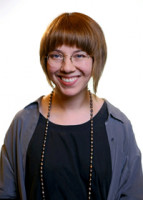
Gabriela Correa
Gabriela Correa, Cornell University
This summer Gabriela Correa, a materials science and engineering student at Cornell University, will be developing quantitative imaging algorithms for electron microscopy data that is sent to a burst buffer on NERSC’s Cori supercomputer immediately after it is imaged at the Molecular Foundry’s National Center for Electron Microscopy (NCEM), which is located at Berkeley Lab. The goal of this work is to make sense of the raw four-dimensional scanning transmission electron microscopy (4D-STEM) data collected at NCEM with NERSC’s Cori and getting useful information back to the microscope users. Correa’s mentors are Molecular Foundry scientists, Peter Ercius, Colin Ophus and Jim Ciston.
“Being part of a multidisciplinary, multi-division team at Berkeley Lab working with an embedded system of this scale is a great learning opportunity,” says Correa. “And the opportunities to learn are what brought me to Berkeley Lab.”

Daniel Jacobson
Daniel Jacobson, Caltech
Daniel Jacobson, a chemical engineering student at Caltech, will be coming to Berkeley Lab in the fall to work with Molecular Foundry Scientist Stephen Whitelam. Jacobson will focus on applying cutting-edge statistical mechanical techniques to study the physics of diffusion-limited aggregation (DLA). DLA is a class of behavior that underlies many natural phenomena, like the growth of frost on a windowpane and lightning. It also plays a critical role in the development of next-generation battery technologies.
“I chose to work at the Theory of Nanostructured Materials Facility at Berkeley Lab because it offers world-class expertise in non-equilibrium statistical mechanics and self-assembly,” says Jacobson. “Berkeley has long been known for its cutting-edge research in statistical mechanics and I am excited to be able to participate in that community. I'm also a huge fan of Northern California's diverse culinary offerings.”
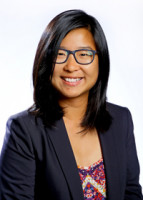
Luna Lin
Yuexia Luna Lin, Harvard
Luna Lin, an applied mathematics student from Harvard University, will spend her summer in Berkeley Lab’s Center for Computational Sciences and Engineering (CCSE) working on adaptive mesh refinement (AMR) with mentor Ann Almgren. In addition to learning how to use the AMR software framework—AMReX—Lin also aims to apply AMR to solve problems of fluid-structure interactions. Throughout her project, she also hopes to learn how to run massively parallel programs, manage critical issues such as load balancing, as well as design algorithms and codes that take advantage of state of the art supercomputers at DOE National Labs.
“I met with Ann Almgren to discuss potential practicum projects last year, and I was instantaneously blown away by the power of adaptive mesh refinement. I chose to do my practicum at Berkeley Lab so that I can learn AMR and the art of applying it from experts like Ann,” says Lin. “Getting my hands dirty in HPC programming and using resources at NERSC is also very exciting.”
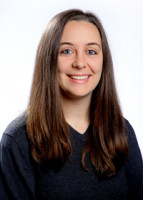
Kayla McCue
Kayla McCue, MIT
Kayla McCue, a student of computational systems at MIT, will spend her summer exploring the biological and technical causes of load balance issues that arise during the implementation of a parallelized metagenome assembler, called MetaHipMer. She will be working with Zhong Wang's group at DOE’s Joint Genome Institute (JGI).
“The major focus of the JGI is on producing and analyzing high-throughput sequencing data, and the opportunity to work with these data using supercomputing resources, as well as the opportunity to work with people who have expertise in this, was a considerable draw for me,” says McCue. “I hope to use the results of my analyses to help modify the assembler to better handle the complexities of metagenomes.”
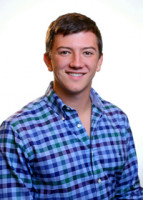
Benjamin Toms
Benjamin Toms, Colorado State University
Benjamin Toms, an atmospheric science student from Colorado State University, is spending his summer applying a deep learning algorithm to detect the Madden-Julian Oscillation (MJO), a tropical atmospheric wave that propagates around the equator about every 30 to 60 days, in global data sets. Karthik Kashinath and Prabhat at the National Energy Research Scientific Computing Center (NERSC) are serving as his mentors.
“The field of atmospheric science is data rich, and Deep Learning provides a stellar opportunity to apply modern computational techniques to glean information from the data more effectively and efficiently,” says Toms. “Prabhat and the Deep Learning for Climate working group based here at Berkeley Lab are at the forefront of applying Deep Learning to pattern recognition within atmospheric science. This provides a fantastic opportunity for me to join an intellectually diverse team that is pushing the envelope of pattern recognition in atmospheric science. I am very excited that Prabhat accepted my proposal to join the team—the future of Deep Learning in atmospheric science is bright!”
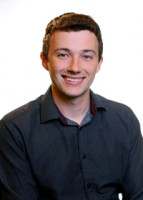
Steven Torrisi
Steven Torrisi, Harvard University
Steven Torrisi, a physics student at Harvard University, is his spending his summer working with Kristin Persson, Director of the Materials Project. In Berkeley Lab’s Energy Technologies Area, Persson and her colleagues use high-performance computing and cutting-edge computational tools to understand the physics and chemistry of materials, while uncovering new materials that could one day serve a great societal need.
Recently, the group searched over tens of thousands of materials to identify a set of materials that may be promising photocatalysts for carbon dioxide (CO2) reduction. Working with the team, Torrisi is using first-principles methods to computationally study these materials in greater depth, in hopes of better understanding the properties of interest, as well as seeing if the materials can support two-dimensional (2D) phases. He notes that 2D phases of these materials could increase the catalytically active surface area. And, due to structural differences between the bulk and 2D phases of these materials, it may also be revealing to better understand what structural factors make a good photocatalyst.
“I chose to come to Berkeley Lab because of its leadership role in applying high-performance computing to fundamental questions in the physics of materials and their applications,” says Torrisi “The Persson group in collaboration with the Jain group, Ceder group, and others are true exemplars of integrating software development with scientific workflows to accelerate the pace of research and widen the scope of possible inquiry. I am optimistic that the tools that I will learn over the summer will be integrated with my work at Harvard in the group of Efthimios Kaxiras.”
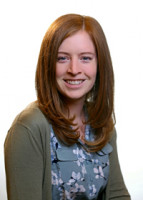
Tina White
Tina White, Stanford University
Tina White, a mechanical engineering student at Stanford University, will be spending the fall in Berkeley Lab’s Computational Research Division (CRD) developing neural network architectures for aerospace engineering problems in industry. She notes that with the correct connectivity and tuning during offline training, a neural network can learn the nonlinear features of datasets consisting of the solutions to the partial differential equations that describe different types of fluid flows. Mentored by CRD Scientist Daniela “Dani” Ushizima, White will test whether her neural network can make the fast, accurate predictions necessary to explore complex design spaces for optimization problems.
“I chose to do my practicum at Berkeley Lab in order to work with Dani Ushizima and her colleagues in the Data Analytics and Visualization Group, the Center for Advanced Mathematics for Energy Research Applications, and the Center for Computational Sciences and Engineering,” says White. “Combined, these researchers have unique expertise in deep learning, fluid dynamics and structure detection in scientific imaging, with very large datasets.”
About Computing Sciences at Berkeley Lab
High performance computing plays a critical role in scientific discovery. Researchers increasingly rely on advances in computer science, mathematics, computational science, data science, and large-scale computing and networking to increase our understanding of ourselves, our planet, and our universe. Berkeley Lab’s Computing Sciences Area researches, develops, and deploys new foundations, tools, and technologies to meet these needs and to advance research across a broad range of scientific disciplines.







 Instagram
Instagram YouTube
YouTube